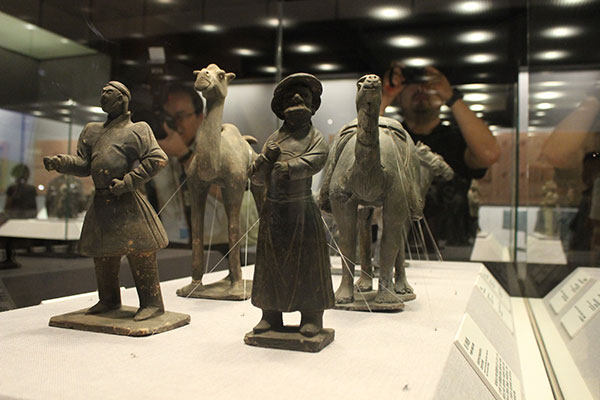 |
|
[Photo by Wang Kaihao/China Daily] |
Pieces include a pottery figure of a dancing man - the only of its kind from the period that has been discovered. A ceramic pillow with depictions of an opera stage, and a porcelain bowl adorned with lotus and tortoise patterns demonstrate the era's best craftsmanship.
A "magic square" from Zhongdu provides early evidence of Chinese use of Arabic numerals, says Gao Hongqing, who selected the show's relics.
It's arranged so the numbers in each of the six rows, six columns and secondary diagonals add up to the same sum.
A section of the show emphasizes religious inclusiveness during the Yuan Dynasty.
"Buddhism, Taoism, Islam and Christianity thrived," says Gao.
A ceramic epitaph inscribed with Nestorian doctrine and a cross-shaped bronze scepter proves Christianity's popularity in China during the period.
Gao says some relics came from county-level museums.
"Their collections may be smaller but are unique," he says.
Gold ornaments from Inner Mongolia's Aohan Banner Museum, for instance, reveal prosperity and the aesthetic sensibilities of Mongol nobles.
"The Yuan Dynasty existed for less than a century, so its relics are relatively few," says the museum's director, Guo Xiaoling. "China spent more time split than united before the dynasty. The Yuan created a solid foundation for lasting cohesion. So it's important to study."
One important aspect of this was Beijing's elevated status, the historian explains.
"Beijing was only a regional center before."
One way this can be seen outside of the exhibition is that some names of Khanbaliq's city gates like Anzhenmen and Jiandemen are still used - for subway stations, that is.
|
|
|
|
|
|
|
|
